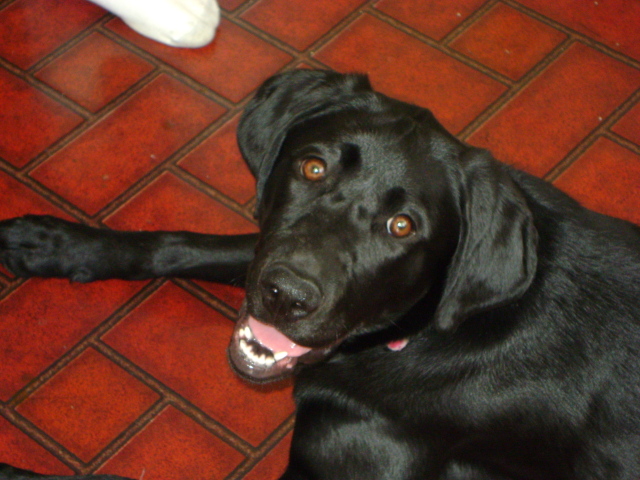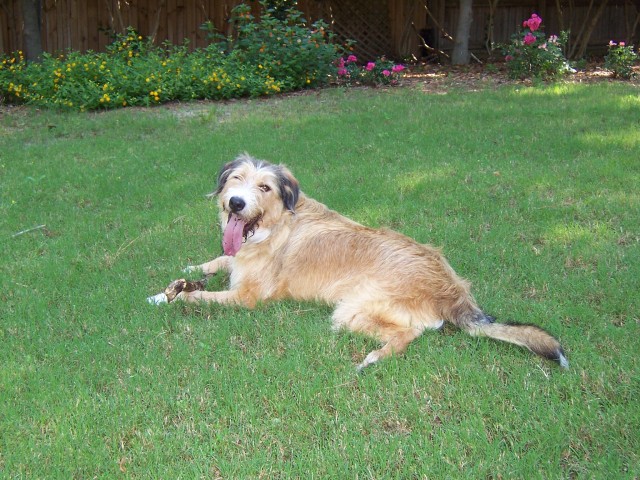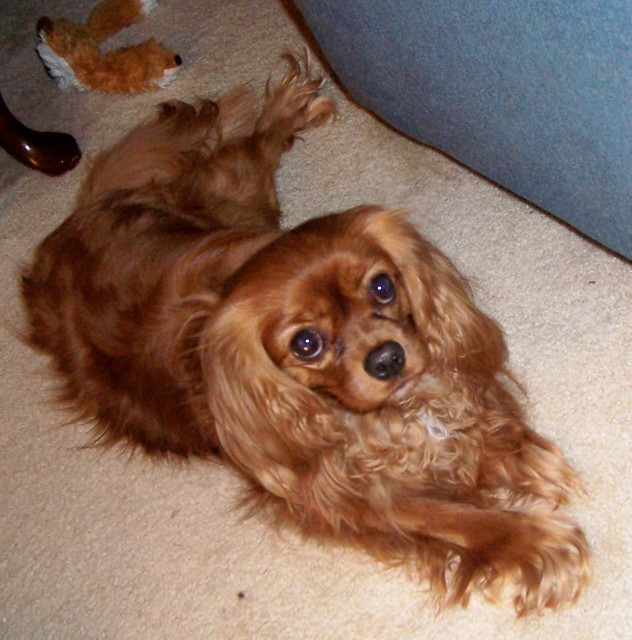QuestionHi, I have a Newfoundland that is 150 pounds. He is both a champion and a CD.
His problem is that he gets very upset about being put up on a grooming table or any unstable surface. One leg of his grooming table wasn't properly attached and it collapsed slowly. I caught it as it was going down and the dog wasn't hurt at all, but then he flat refused to get on the grooming table again.
So I just bought a "pause table", the kind that you use in agility, from J&J dog, and set it at the 8 inch setting. I put a rubber mat underneath it and on top of it.
I've been trying to get him on it, but he is still frightened of being up on any surface, even this very stable one that is only 8 inches high.
Yet, he needs constant grooming right now- it was a very cold winter and he his shedding a very heavy coat.
I'd like suggestions as to how to get him to use the pause table as a grooming table, and at what point it might be appropriate to try to raise it higher (it goes to 16 and 20 inches).
Also, he is in general very scared of unstable surfaces- he refuses to go over a wooden bridge on our bicycle path (and so we go around- which scares me to death- because to go around is to go on the interstate off ramp!).
I also have about 8 stairs down to the downstairs bath to bathe him, and he refuses to climb the stairs to get back up after his bath.
Any help would be appreciated! We are really having a tug of war- I have to pull him on his leash to get him up and down stairs, and onto his grooming surface, and I can barely do it.
AnswerBy forcing this dog to get on the table and go up and down stairs, you're worsening the problem. This may have originated when the grooming table collapsed (as you posted) and has now generalized to any surface which appears unstable to him. However, you can't totally rule out orthopedic injury so you must have him evaluated by the veterinarian. He may have sustained what might appear to be a minor injury but which causes him enough pain to want him to not engage in behaviors that provoke it. That having been said, you need to rehabilitate this problem very slowly. No force can be used at any time. First, the new table needs to be introduced with primary rewards, but you need to observe the dog's body signals to be sure you're not rewarding fearful thoughts. Once the dog understands that in the presence of the new table he will receive special reward, you then take it to the next level. Train him to put one foot on the table for huge reward and escalate from there. You cannot even think about elevating this table until your dog freely goes up onto it for reward. Obviously, you have to avoid all behaviors which force this dog to put foot on any surface which frightens him, so your bicycle path has to change. Regarding stairs, the same holds for them as for the new table: new associations with reward and going very, very slowly. All of this rehabilitation can take weeks (at least) and you must let the dog's body signals tell you if you are going too fast. If your dog has suffered some injury and is in pain, none of this will work. So your first stop must be the veterinarian.

 Black lab - 1 yr
QuestionSheba
QUESTION: My lab loves to bite her
Black lab - 1 yr
QuestionSheba
QUESTION: My lab loves to bite her
 My dog is shaking and hiding under my bed recently
QuestionRorrie and Pencil
QUESTION: My dog, Rorr
My dog is shaking and hiding under my bed recently
QuestionRorrie and Pencil
QUESTION: My dog, Rorr
 Post bladder surgery potty training for INDOORS!
QuestionTiki
QUESTION: Dear Dr. Connor,
My 10 ye
Post bladder surgery potty training for INDOORS!
QuestionTiki
QUESTION: Dear Dr. Connor,
My 10 ye
 anxious dog
Question
Louie
Hi, We adopted a 2 year old male A
anxious dog
Question
Louie
Hi, We adopted a 2 year old male A
 Dog light and shadow chasing
Question
Jenni
My 3 year old Cavalier King Charles Span
Dog light and shadow chasing
Question
Jenni
My 3 year old Cavalier King Charles Span